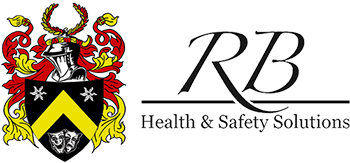
Published 6 Sep in
Health & Safety Responsibilities as a Director
Although the health and safety picture in the UK has improved significantly over the past twenty years, accidents do still happen. In the modern legal environment, if directors are proven to have been responsible for causing an accident, then a jail sentence could occur.
Director Imprisoned
This is what happened to David Steed, a company director, who in In March 2017 was jailed for eight months for health & safety violations. The case involved a young worker who suffered burns to his arms and legs after being told to stand on a skip and pour flammable liquid into burning waste. The resultant fireball blew the young employee off the skip.
Investigation
The investigation that followed the incident discovered that Mr Steed had not only failed to ensure that the waste material was burned safely, he also didn’t bother providing first aid to the employee or send him to hospital and was neglectful in his legal duty to inform the Health and Safety Executive (HSE) what had happened.
Directors and the Law
Health and safety law places certain responsibilities on organisations and employers, and directors can be personally liable when these responsibilities are breached. In short, members of the board have both collective and individual responsibility for health and safety.
Should a violation take place then, depending on the severity of the outcome, the HSE or the Police will investigate.
A Tougher Time for Directors?
In the year to 31 March 2016, the HSE prosecuted 46 company directors and managers for health and safety violations, compared to just 12 for the year before. Of these, 12 were ultimately sentenced to prison.
By contrast, the number of employees who were prosecuted by the HSE over the same period fell from 10 in the previous year, to just one.
“The data confirms what we’ve been seeing in practice with the HSE displaying an increased zeal to prosecute the most senior individuals within a business, yet virtually ignoring employees who are frequently more culpable. By making senior management responsible for the health and safety failings of their business and their staff, the increased enforcement is a serious boardroom issue’, Chris Morrison, partner and UK head of safety, health and environment at Clyde & Co told Safety and Health Practitioner.
Fines On the Up Too
And it's not just prison sentences that are rising. Between February 2016 and August 2016, health and safety fines totalled £20.6 million, compared to £14.4 million in February 2015 to August 2015.
‘After decades of relatively stable and predictable fines, the tide is now rising rapidly as the new guideline is applied by the criminal courts’ Morrison continued. ‘The worrying thing for company directors is that fines are now routinely hitting the £1 million mark for non-fatal offences and even those where nobody has been injured’
How Can Company Directors Protect Themselves?
A health and safety risk assessment needs to be undertaken, which is exactly what it sounds like, an assessment of the risks in the workplace.
When doing this, a business must appoint someone competent to assist; someone with the necessary skills, knowledge and experience to manage health and safety.
Outside Help?
If the confidence or expertise to manage this in-house aren’t there, or if it is a higher-risk business, then external help or advice might be required. According to the Royal Society for the Prevention of Accidents, the benefits of contracting an external auditor include:
● Auditors tend to be Chartered Members of the Institution of Occupational Safety and Health (CMIOSH) and Office for Strategic Coordination of Health Research (OSCHR) registered
● Auditors have significant experience of conducting health and safety audits within various industries
● Organisations can receive an auditing award at the same time as the audit is conducted
A Risk Free Business?
Keep in mind that nobody can eliminate risk entirely from a workplace, and the law doesn’t expect employers to do so. What it does expect is for employers to put in place measures to limit risks, so far as is ‘reasonably practicable’. There is no need to literally wrap employees in cotton wool.
What's more, any risk assessment need only include what a business could reasonably be expected to know – nobody is expected to anticipate unforeseeable risks. For example, you are not going to be prosecuted for failing to provide adequate means of escape in the event of the zombie apocalypse.
Change and Reassessment
Few workplaces stay the same and inevitably new equipment, substances or procedures will be brought in that could lead to new risks. It makes sense to review the risk assessment on a regular basis. If anything significant changes, check the risk assessment and update it.
Benefits
Alongside the peace of mind derived from knowing that you have fulfilled your legal obligations and done everything reasonable to ensure that employees and customers are safe from harm, there are also other benefits that a business can take from a robust approach to health and safety.
● Lower employee absence and turnover rates (which also reduces costs related to recruitment and the hiring of temporary staff)
● A good standard of health and safety in the workplace can reduce your insurance premiums, as well as the costs of accidents that aren't covered
● A better reputation for corporate responsibility can be gained among investors, customers and communities

What do RB Health and Safety Solutions Offer?
We can provide you with a fully qualified and highly experienced Health and Safety Consultant who will produce a full report on the current effectiveness of your health and safety system, and what you can do to build on its strengths, and combat any weaknesses.
Click here to find out more or contact us here.

